
Ever since Europeans arrived on the continent of South America, the Amazon has been the stuff of legend, a realm full of adventure yet fraught with perilous dangers. Even its name, ‘Amazon’ is a result of fatal encounters with its indigenous inhabitants, as the early Spanish explorers mistook the female warriors of the tribes of the South American jungle with the ancient Amazons, the legendary fighting women of Asia and Africa, as described by the Greek historians Herodotus and Diodorus.
Today, our knowledge of Amazonia is not as extensive as most other environments on earth, and this gives rise both to its fascinating allure, but also to misgivings amongst those people wishing to visit about the dangers of the Amazon River and the creatures therein (and in its neighboring rainforest). The sheer size of the Amazon Basin has contributed to its mystery, as does the fact that it remains mostly unexplored to this day.
As one of the most biodiverse areas on Earth, the Amazon is home to its fair share of creepy crawlies and monstrous creatures. Here then is a list of the top dangers of the Amazon River, profiling some of the scariest and most dangerous animals in the Amazon Rainforest, but with some helpful myth-busting along the way.
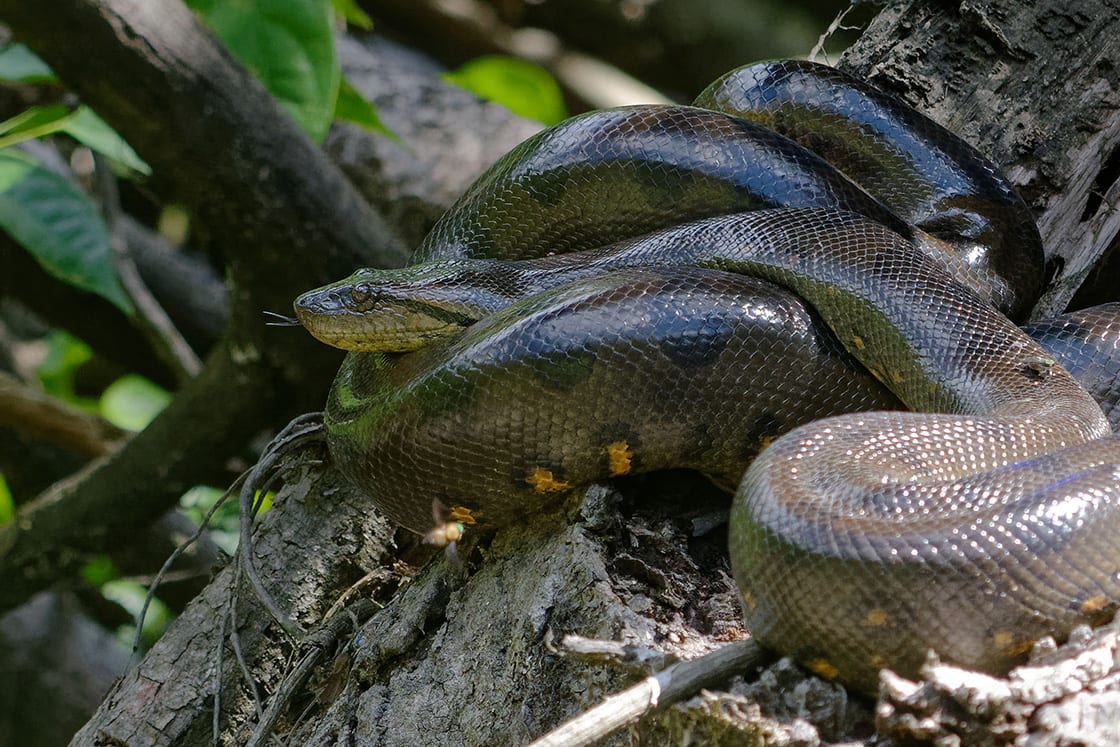
Green Anaconda
The Amazon is home to a whole range of terrifying and dangerous snakes, from the highly venomous pit vipers to the ferocious South American rattlesnake. But none is perhaps more intimidating than the huge green anaconda. Reaching lengths of over 30 feet and weighing more than 500 pounds, it’s the largest snake in the world. The good news is that they are not venomous! But instead, they use their formidable muscle power to constrict and suffocate their prey before swallowing whole without chewing, regardless of their victim’s size. They are particularly agile and stealthy in the water and lurk in the Amazon River in wait of anything they can strike and overpower, which includes jaguars, caimans, turtles, wild pigs, deer, and even humans. The large size of its meals means that these snakes don’t need to feed often, sometimes lasting months between meals, but we still recommend staying well clear!
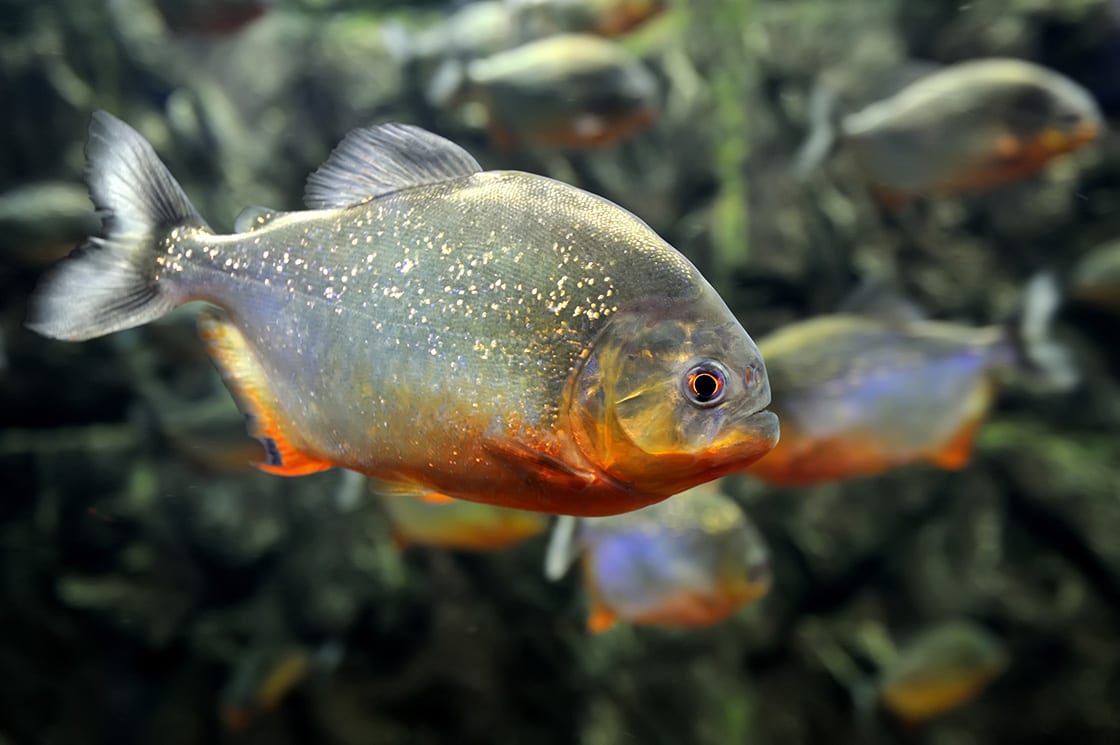
Red-bellied Piranha
This fearsome-looking fish has a reputation for “feeding frenzies” whereby large schools swarm around prey stripping all the flesh from the bones within a matter of minutes. There are plentiful stories of large mammals and even humans being targeted and eaten alive in the water, as depicted in several well-known Hollywood movies. With its razor-sharp triangular-shaped teeth, powerful jaw, and fearsome-looking red eyes, the piranha certainly looks pretty terrifying.
But you’ll be glad to learn that their aggressive reputation is largely overstated, especially when it comes to people. In actual fact, red-bellied piranhas are primarily scavengers, feeding mainly on other fish (usually already dead or dying), insects, and plant life. They are actually more innocent than they seem. You can swim safely with piranha in most places in the Amazon River. At the very most you may just feel a light nibble on your toes or fingers. Piranha also makes a delicious meal and on an Amazon river cruise, you may have a chance to fish for piranhas. So perhaps they’re the ones who should be scared of us!
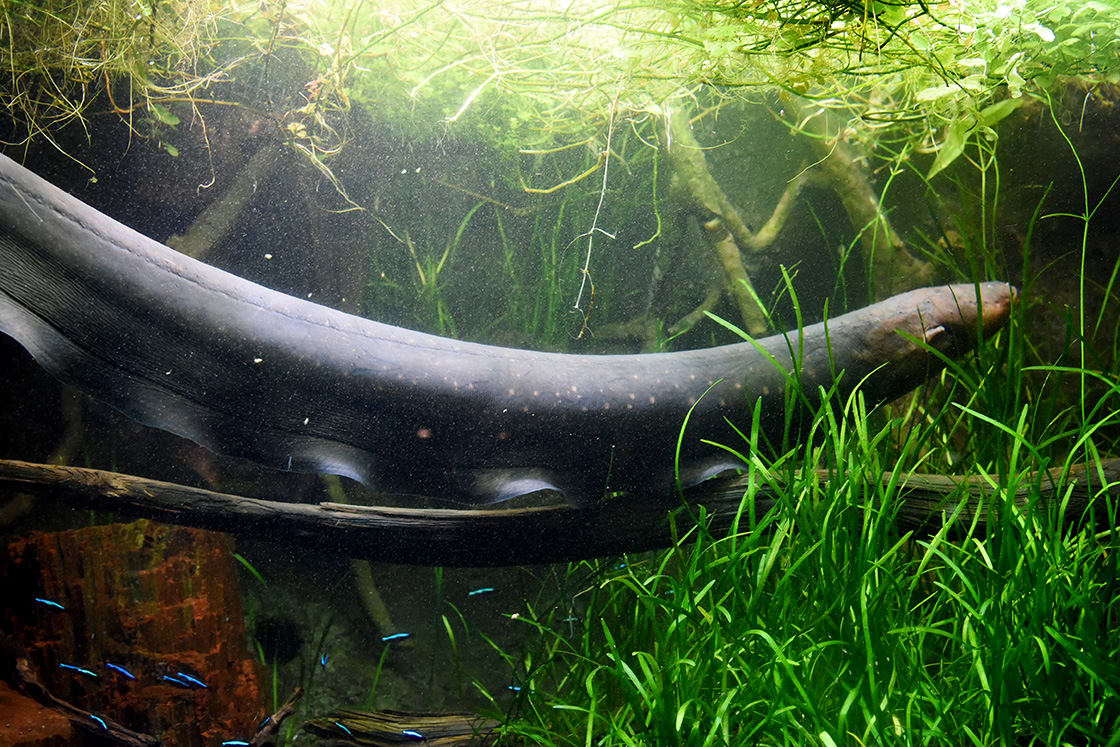
Electric Eel
Not actually an eel, but a type of knife fish, this shocking creature is capable of generating up to 600 volts through its elecrocyte cells, five times more electricity than in the standard wall socket. It usually only uses small amounts of electricity to stun its prey of choice, but when feeling threatened it is capable of releasing stronger and multiple shocks that can endure minutes on end. Residing in the murky depths of the Amazon River, the electric eel feasts on invertebrates, fish, and small mammals. There have been numerous reported incidents between humans and electric eels often involving unpleasant and unexpected shocks. The electric eel is largely avoided by locals as it can still shock up to 8 hours after its death.
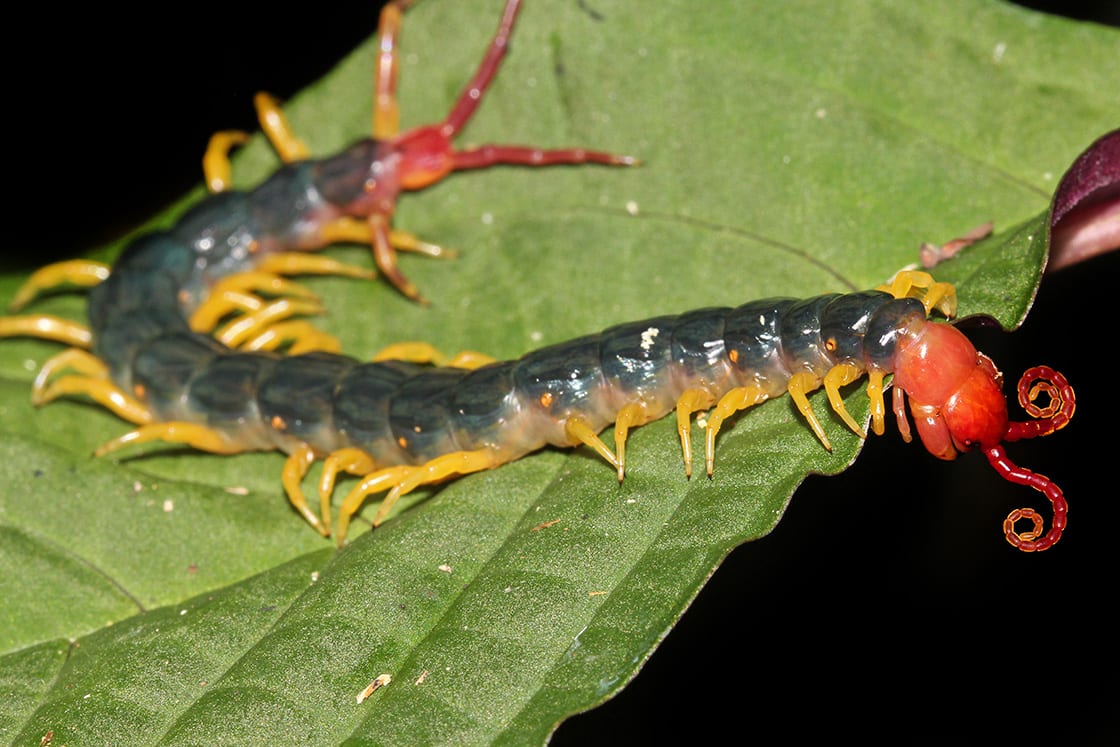
The Extremely Venomous, Peruvian, Giant,Yellow-leg, Or Amazonian Giant Centipede
Another particular creepy-looking inhabitant of the Amazon jungle is this giant centipede, the largest centipede in the world, growing to lengths of up to 30 centimeters and sporting no less than 46 legs. These creatures can be spotted running swiftly along the forest ground or skillfully negotiating tree trunks and branches in search of prey, which can range from insects, lizards and birds, to mice, frogs, snakes, and even bats. They are equipped with a pair of modified legs terminating in sharp claws near the head which they use to grab unsuspecting victims, penetrate the skin, and inject a highly toxic venom that is fatal to most small animals. Whilst not lethal to humans, if you are unlucky enough to get bitten you’ll certainly know about it as the poison triggers symptoms of localized pain, swelling, fever, and weakness.
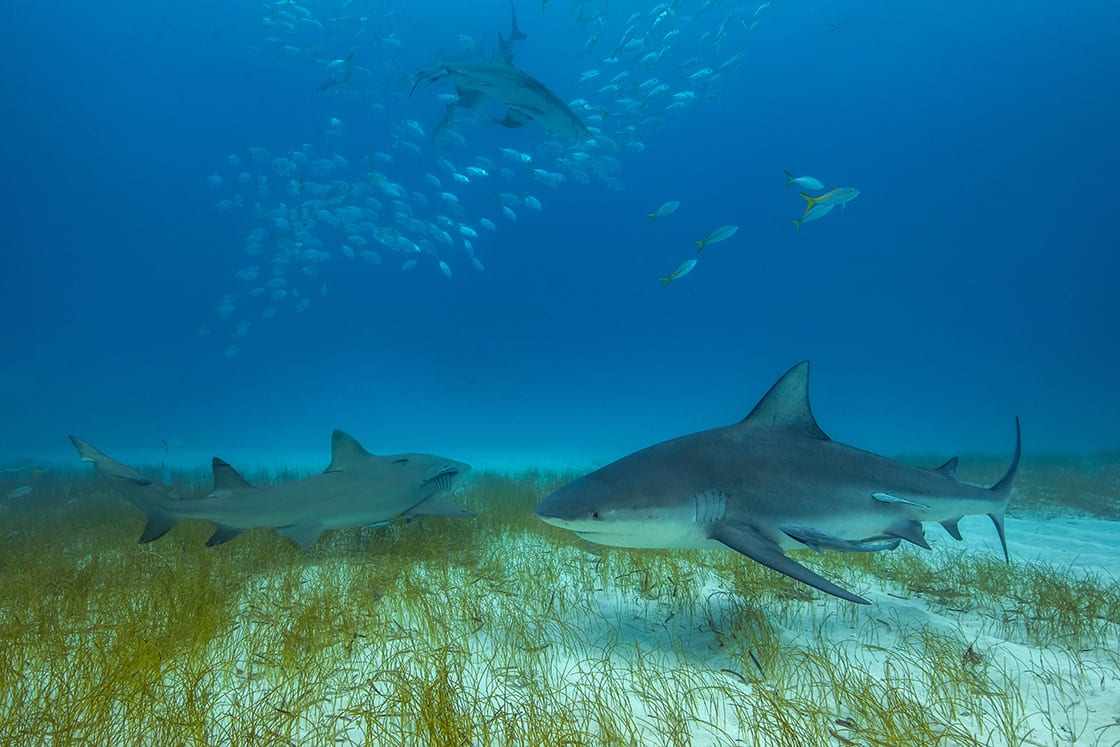
Bull Shark
Believe it or not, the Amazon is also home to the world’s most dangerous shark. The bull shark is huge and very hefty, spanning lengths of up to 11 feet and approaching 700 pounds. It’s capable of adapting to both salt and fresh water environments and has been spotted as far upstream as Iquitos in Peru. They possess enormously powerful jaws and will gorge on just about anything, from sloths to dolphins, turtles to birds, and even members of their own species. The bull shark is aggressive and highly territorial and is thought to be responsible for the majority of coastal attacks on humans due to its preference for shallow waters. Thankfully, it is still a relatively rare occurrence to encounter a shark in the Amazon River.
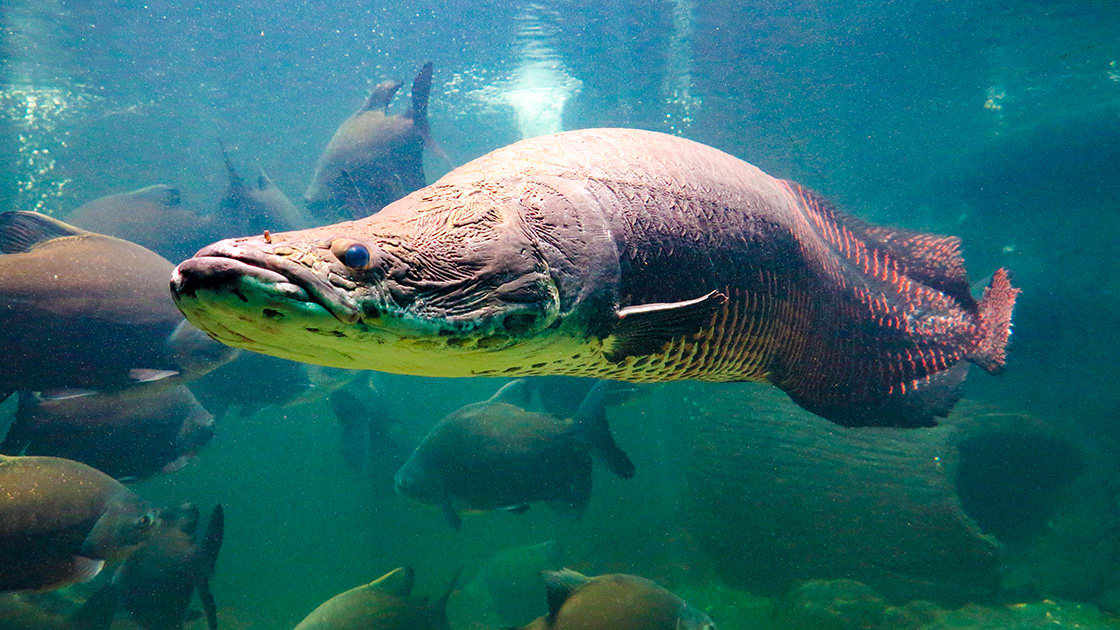
Arapaima Gigas One Largest Freshwater Fish And River Lakes
Nicknamed the ‘dinosaur fish of the amazon’, the arapaima is one of the largest carnivorous freshwater fish in the world, spanning 2 meters on average and coming in at over 100kg, though there are also cases measuring a whopping 15 feet. It feeds primarily on fish and crustaceans but is also partial to striking down small land animals who happen to be near the shore. Its tough armor-like scales make it immune to piranhas, whilst a powerful set of jaws make it a pretty fearsome predator all around.
Unlike many of the creatures profiled in this list, they don’t pose a threat to humans. In fact, being an important food source for indigenous tribes, they are vulnerable to being hunted by people, so much so that the Brazilian government has banned commercial fishing of the arapaima. However, it still pays to be wary as this fish is thought to be the inspiration behind a local Amazonian legend that refers to an evil spirit said to inhabit the body of a huge scaly fish capable of leaping out of the water and knocking out fishermen in a torpedo-style attack.
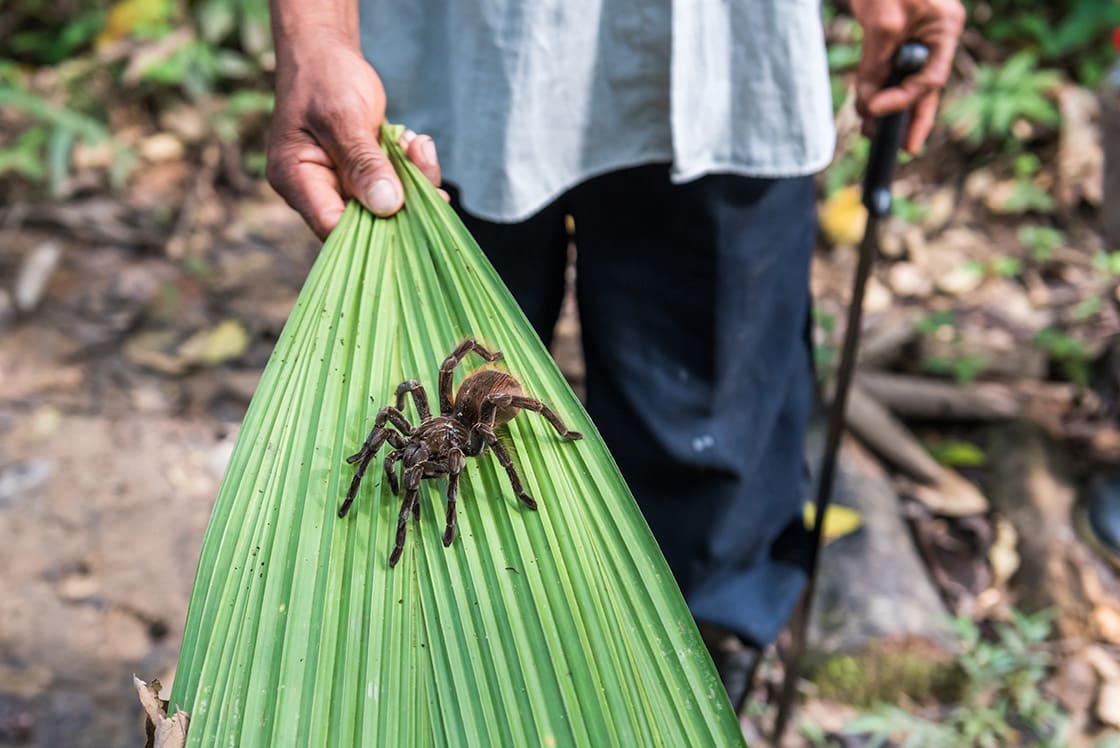
Amazon Tarantula
Anyone visiting the Amazon rainforest can be lucky, (or unlucky) to spot a tarantula, the largest spider in the world. You’ll recognize their massive bodies (up to 13 inches across!) by their black and brown barbed hair. They live in burrows in the ground or high in treetop nests. They might look scary, but you don’t have to worry, tarantulas are gentle giants. Their bites are not venomous, and in the rare occasion of getting bitten by one, a bite will feel similar to a bee or wasp sting and has no lasting effects. The hairs covering their body, however, can be extremely irritating to human flesh, so maybe avoid getting too close!

Blue And Yellow Bra Tree Frog
These brilliantly colored creatures guys are some of the most pleasing on the eye in the rainforest, but their decorative bodies should be taken as a warning to stay away. They secrete a powerful poison through their skin, and enough of it can cause heart failure within minutes. The golden poison dart frog is considered one of the most toxic animals on Earth, potent enough to kill up to ten humans!
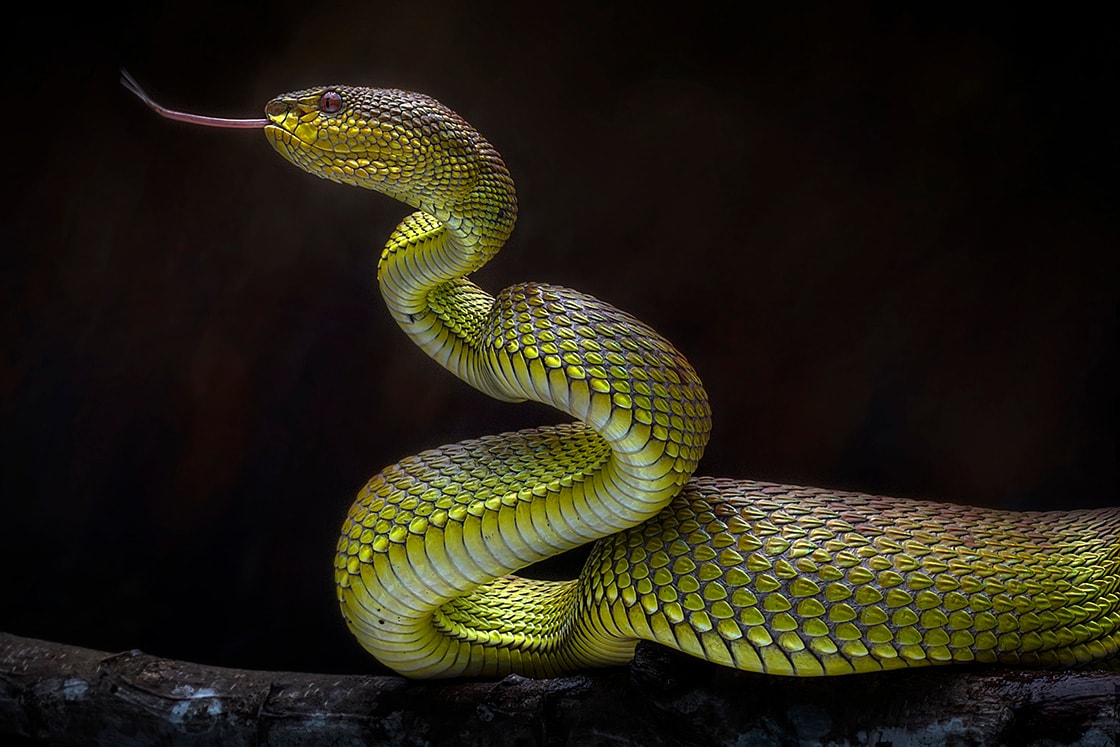
Venomous Snake Viper Reptile
These venomous snakes can grow from 1 to 12 feet long and house a strong venom in their fangs. Some species of pit vipers found in the Amazon rainforest include South American rattlesnakes, the beautiful eyelash vipers, the fer-de-lance (responsible for most of the snakebites in its range), and bushmasters (the longest vipers in the world, growing up to 12 feet long!).

Red Assassin The Bug With The Prey
True to their name, these bugs can sneakily kill with ease. They possess an organ protruding from their mouths, which they use to inject poisonous saliva into their prey, melting their organs from the inside out. These bugs are mainly dangerous to other insects in the Amazon, including ones much larger than they are, but don’t pose as big of a threat to humans. One subfamily, the kissing bugs, is mainly harmful due to the Chagas disease they transmit, killing about 12,500 per year.
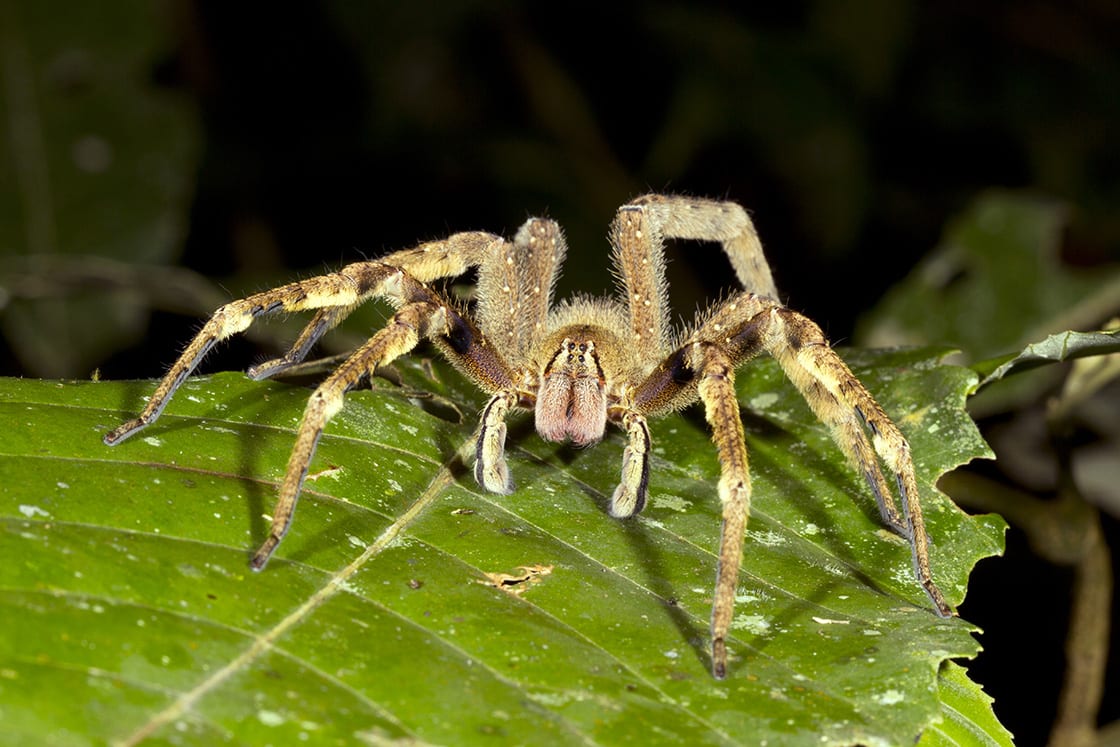
Venomous Wandering Spider Looking At The Camera
One of the most venomous types of spiders on the planet, these guys wander the rainforest grounds at night in search of food. If you happen to encounter one, their venom can cause intense pain but is treatable. If left untreated, it will eventually lead to paralysis and trouble breathing. There are eight species of this spider, all of which can be found lurking in the Amazon.
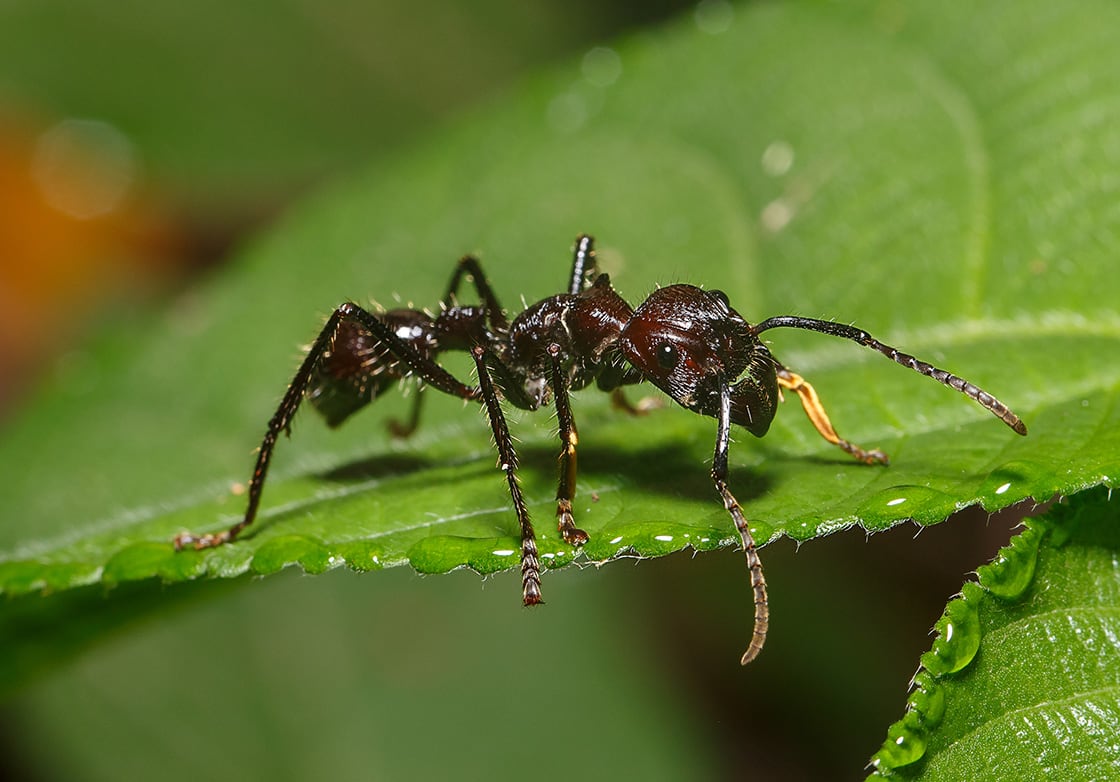
Bullet Ant In The Jungle Of Amazonas River
Over an inch long, these ants can deliver a record-breaking sting of 4.0+ on the Schmidt’s sting pain index, so powerful that victims often compare the pain to that of being shot, hence its name. The pain is all-consuming and can continue for up to 24 hours. The reason is the bullet ant injects venom that causes temporary paralysis to the area, though thankfully not poisonous or fatal. The Brazilian Sateré-Mawé tribe famously use bullet ant stings as part of their ancestral initiation rites to become warriors.
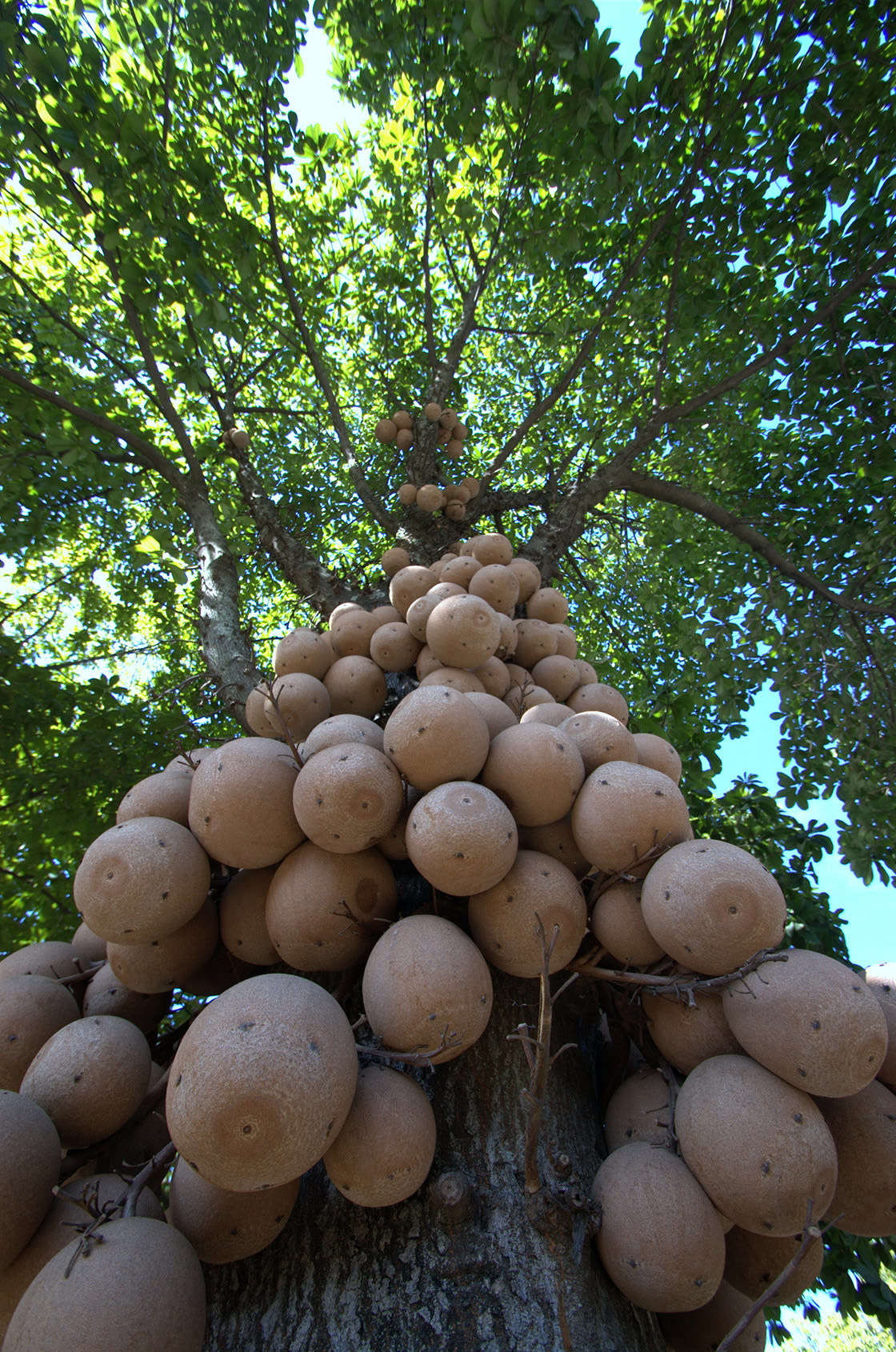
Cannonball Tree
It’s not just the animals of the Amazon you have to watch out for. Strychnos and Curare are two Amazonian plants that are infamously poisonous. Both are often used in creating poisonous arrows by indigenous tribes that kill through contact with blood and result in asphyxiation.
Another danger you might not think of is from above! The Cannonball Tree that grows in the tropical rainforests of South America can grow up to 35 meters tall but have very hard and heavy fruits, not unlike a coconut that often falls to the ground with a loud explosion, hence the name. But you wouldn’t want to be walking underneath when this happens as a falling cannonball fruit could quite easily cause a fatal injury.
Some uncontacted tribes still exist in South America, and nearly all of them are in the deepest parts of the Amazon, far from the regions where tourists visit. They are not aggressive and prefer to stay away from other civilizations. The truth is that most native people in the Amazon live much like you and me. There are cities, ports, bridges, and industries in many parts of the Amazon, such as the city of Manaus, where many Brazilian Amazon cruises embark and disembark.
The indigenous people living along the shores of the mighty Amazon have a strong appreciation for and dependence on the forest for their livelihood. While they recognize their ancestry and engage in traditional customs, they wear modern clothing, go to school and participate in businesses.
We believe that visiting local communities helps to inject much-needed revenues so that they can preserve their cultures and traditions while giving appropriate care and opportunities to their children. Tourism is normally considered a sustainable source of economic development, that provides alternatives and much-needed income to the Amazon’s inhabitants.
While the Amazon is filled with amazing creatures and plants like those listed above, they have little interest in human contact, and attacks on humans, particularly tourists, are rare. They prefer their natural diet. Most snakes and spiders in the Amazon are not venomous. They are afraid of humans so when they see them coming, they tend to go in the opposite direction.
Guests who visit the Amazon rarely come across dangerous animals as jungle hikes are taken on well-maintained trails. If you happen to see an animal that looks disturbed, threatened, or nervous simply inform your guide and calmly walk away. Many animals in the Amazon forest have defensive mechanisms that are only utilized when provoked, such as the poison dart frog, or the electric eel. If you are lucky enough to see one, simply keep it at a safe distance. Then, be sure to tell everyone about the experience, as you have been extremely lucky to see nature at its rawest!
The Amazon Region is jam-packed with interesting wildlife, understanding and respecting their world will ensure your Amazon vacation runs smoothly.
While Rainforest Cruises aim to provide accurate and up-to-date information, we make no representations as to the accuracy or completeness of any information herein or found by following any link on this site. Rainforest Cruises cannot and will not accept responsibility for any omissions or inaccuracies, or for any consequences arising therefrom, including any losses, injuries, or damages resulting from the display or use of this information.




